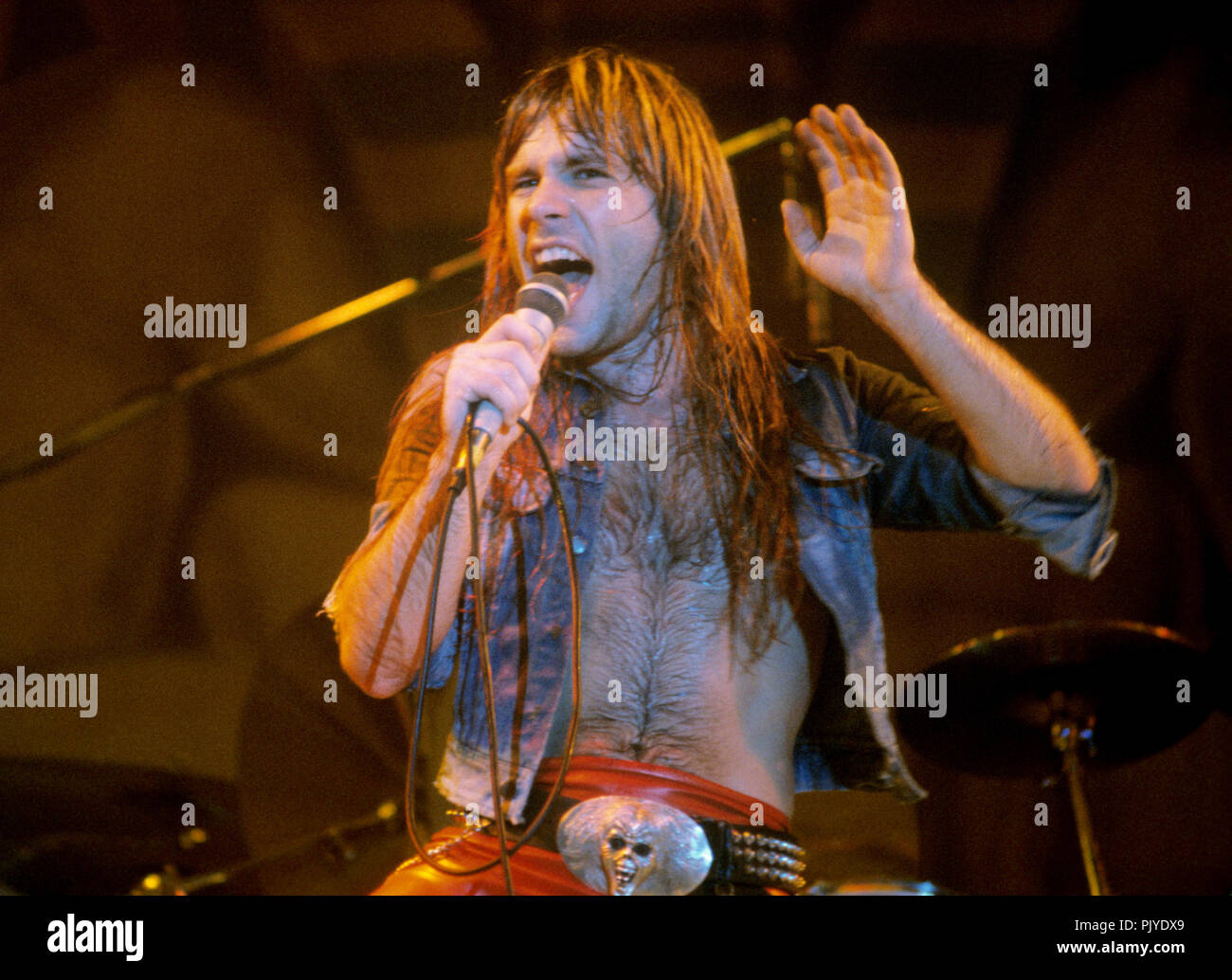Music
The Iconic Voice of Heavy Metal Bruce Dickinson, the Iron Maiden Singer
When one thinks of legendary heavy metal bands, Iron Maiden undoubtedly springs to mind. More than just a musical group, Iron Maiden has become an emblem of a genre that celebrates power, complexity, and rebellion. At the helm of this iconic band is its lead vocalist, Bruce Dickinson. His influence stretches far beyond mere vocal prowess; it encompasses the very essence of what it means to be a performer in the world of rock music. This article delves deeply into the life, artistry, and legacy of Bruce Dickinson, the quintessential iron maiden singer.
The Genesis of a Heavy Metal Legend
Bruce Dickinson’s journey as the iron maiden singer began long before he took center stage with Iron Maiden. Born on August 7, 1958, in Worksop, England, his early years were a tapestry of diverse musical influences. It is crucial to understand how these formative experiences shaped his artistic identity, enabling him to rise to prominence in the heavy metal scene.
A Melodic Upbringing

From a young age, Dickinson was surrounded by a rich array of sounds. Classical music, rock and roll, and opera permeated his household, stirring a deep passion for music within him.
This eclectic exposure allowed him to develop a distinctive vocal style, characterized by a remarkable range and unique timbre. Unlike many of his contemporaries, who often relied solely on raw power or grit, Dickinson learned to balance strength with melody.
As he honed his craft, he became adept at conveying a wide spectrum of emotions through song—an essential skill for any storyteller, especially in the realm of heavy metal. By fusing various genres, he created a sound that would later define Iron Maiden, making him not merely a singer but a captivating narrator.
The Early Years of Rock
Before joining Iron Maiden, Dickinson embarked on his musical journey with bands like Samson. These formative years served as a crucible for his talents. He developed a reputation for electrifying live performances and powerful vocals, even though those initial attempts didn’t garner widespread recognition.
His time with Samson taught him the rigors of performing, giving him invaluable experience that he would carry into his tenure with Iron Maiden. The raw energy of the punk movement, coupled with the theatricality of classic rock, influenced his performance style. As he transitioned into Iron Maiden, he brought with him an understanding of how to engage crowds and create memorable concert experiences.
Joining Iron Maiden
In 1981, Bruce Dickinson officially joined Iron Maiden, stepping into the role of the iron maiden singer. His arrival marked a pivotal point in the band’s evolution, transforming their sound from a punk-infused rock to a more sophisticated and melodic heavy metal experience.
With Dickinson’s operatic flair, Iron Maiden began to explore grander themes and complex compositions. Songs like “The Number of the Beast” and “Hallowed Be Thy Name” showcased not only his vocal abilities but also the storytelling elements that would become hallmarks of the band’s discography.
This transition opened the door for expansive narratives woven through their lyrics, allowing Dickinson to merge his love for history and mythology with his musical talent.
Analyzing Bruce Dickinson’s Vocal Prowess

At the heart of Bruce Dickinson’s status as the iron maiden singer lies his extraordinary vocal talent. His ability to traverse a wide range of notes and infuse emotion into each performance has solidified his place in heavy metal history. But what precisely makes his voice so compelling?
The Technical Mastery
Bruce Dickinson’s vocal range is nothing short of astonishing. Known for hitting soaring high notes with clarity and power, he crafts melodies that linger in the minds of listeners long after the music fades.
What sets him apart, however, is not solely his range but also his technique. Through years of practice and performance, he has mastered breath control, enabling him to deliver sustained notes effortlessly. Each note carries with it a depth of emotion, inviting audiences into the stories he tells.
Beyond technical skills, Dickinson’s ability to modulate his tone adds layers to his performances. Whether he’s portraying anguish, triumph, or adventure, his voice resonates with authenticity, creating a connection with the audience that few can replicate.
The Theatrical Presence
In addition to his vocal capabilities, Dickinson is known for his magnetic stage presence. When he performs, he isn’t just singing; he transforms into a character, embodying the very spirit of the songs.
His theatrical flair can be traced back to his early exposure to drama and literature, making each performance a visual feast. Audiences are drawn not just to his voice but also to his charismatic interactions, energetic movements, and engaging storytelling.
Taking cues from theatrical traditions, Dickinson utilizes props, costumes, and stagecraft to enhance the overall experience. This immersive approach encourages fans to dive deeper into the narratives presented in the music, elevating Iron Maiden’s concerts to unforgettable spectacles.
The Emotional Connection
One of the most compelling aspects of Bruce Dickinson’s work as the iron maiden singer is his capacity to forge emotional connections with listeners. His lyrics often delve into introspective themes, exploring topics such as mortality, existentialism, and heroism.
Through his unique blend of storytelling and musicality, Dickinson navigates complex emotions, inviting fans to reflect on their own experiences. Songs like “Fear of the Dark” resonate deeply, tapping into universal feelings of anxiety and vulnerability.
Moreover, his ability to convey these sentiments vocally enhances the emotional weight of the lyrics. When he sings, it feels as though he is sharing a piece of his soul. This authenticity is what endears him to millions of fans worldwide, turning casual listeners into lifelong devotees.
The Evolution of Iron Maiden’s Sound

Bruce Dickinson’s impact on Iron Maiden extends far beyond his vocal contributions. As the band’s iron maiden singer, he has played a pivotal role in shaping their sound, evolving it over the decades while staying true to the core essence of heavy metal.
From Punk Roots to Epic Narratives
Iron Maiden’s early music was heavily influenced by the punk scene. The rough edges and raw energy of their first two albums laid a foundation for their future direction. However, once Dickinson joined, the band began to explore more ambitious musical horizons.
With his multifaceted vocal style, they incorporated elements of classical music, progressive rock, and even folk into their work. This shift allowed for longer compositions and intricate arrangements, resulting in songs that told grand tales.
Tracks like “Rime of the Ancient Mariner,” which draws inspiration from Coleridge’s poem, showcase this ambition perfectly. Dickinson’s ability to adapt his vocals to fit the narrative arc of such songs has set Iron Maiden apart as masters of storytelling within the heavy metal domain.
Thematic Depth and Complexity
As Iron Maiden evolved, so too did the thematic complexity of their lyrics. Under Dickinson’s guidance, the band tackled issues such as war, religion, and mythology, weaving them into the fabric of their music.
Songs like “Aces High” pay homage to aerial combat during World War II, illustrating not only the excitement of flight but also the underlying somber reality of war. Such themes elevate their music from mere entertainment to thought-provoking commentary on human experience.
Dickinson’s interest in literature and history enriches this lyrical depth. Each song becomes a narrative tapestry interwoven with historical references, mythological figures, and philosophical musings, creating a multifaceted listening experience.
The Influence of Modern Trends
Despite being a stalwart of heavy metal since the 1980s, Iron Maiden has demonstrated resilience by adapting to modern trends without compromising their identity. Dickinson has embraced new technologies and production methods, allowing their sound to evolve while maintaining the essence of what made them iconic.
Collaborations with younger artists and participation in festivals that celebrate diverse genres have kept the band relevant in an ever-changing music landscape. Their willingness to experiment while staying true to their roots showcases Dickinson’s vision as a forward-thinking artist.
This adaptability not only resonates with longtime fans but also introduces Iron Maiden to new generations who seek music infused with integrity and authenticity.
The Multifaceted Life of Bruce Dickinson

While Bruce Dickinson is celebrated primarily as the iron maiden singer, his life extends far beyond music. He embodies a multifaceted existence, engaging in various pursuits that enrich his artistry and personal growth.
The Pilot’s Perspective
One of the most fascinating aspects of Dickinson’s life is that he is a commercial pilot. His passion for aviation has inspired countless songs, enriching the narrative quality of Iron Maiden’s discography.
In songs like “Aces High,” he draws parallels between the exhilaration of flying and the freedom found in music. This connection adds layers to the lyrics, allowing listeners to appreciate the adventures that come with both pursuits.
Moreover, his experiences as a pilot provide him with a unique perspective on life, drawing comparisons between the discipline required in aviation and the dedication needed in music. This duality informs his creative process, encouraging him to constantly push boundaries and reach new heights.
Authorship and Public Speaking
Beyond the realm of music and aviation, Dickinson is also an accomplished author and public speaker. He has penned several books, including autobiographical works that shed light on his journey through music, life, and creativity.
His writings reveal insights into the challenges he has faced, offering readers a glimpse behind the curtain of fame. By sharing his experiences, he inspires others to pursue their passions, regardless of the obstacles that may arise.
As a public speaker, Dickinson engages audiences in discussions about creativity, resilience, and the importance of following one’s dreams. His ability to articulate complex ideas and connect with people on a personal level underscores his versatility as an artist and thinker.
Philanthropy and Advocacy
In addition to his artistic endeavors, Dickinson is actively involved in philanthropy and advocacy. He has supported numerous charities and initiatives aimed at improving education, healthcare, and social justice.
Through his platform as the iron maiden singer, he raises awareness about important issues and encourages fans to engage in positive change. This commitment to social responsibility is a testament to his character, demonstrating that his influence extends beyond music.
Moreover, Dickinson’s efforts in promoting arts education underscore his belief in the transformative power of creativity. By advocating for the arts, he reinforces the idea that music and expression are vital components of human experience, inspiring future generations of artists.
Bruce Dickinson, the iron maiden singer, embodies the very spirit of heavy metal. His extraordinary vocal talent, theatrical presence, and profound storytelling ability have cemented his legacy as one of the genre’s most influential figures. Beyond music, his multifaceted life serves as an inspiration to many, showcasing the importance of creativity and passion in all endeavors.
Through decades of evolution, Iron Maiden remains a beacon of musical excellence, driven by Dickinson’s relentless pursuit of artistry and innovation. As fans continue to celebrate his contributions, it is evident that the stories woven into their music will resonate for generations to come. Ultimately, Bruce Dickinson stands not only as a singer but as an enduring symbol of the rich tapestry of heavy metal—a force that transcends time and space, inviting us all to embark on an exhilarating journey through sound and story.
